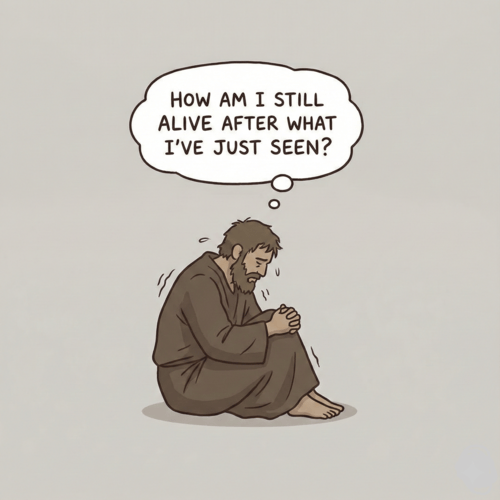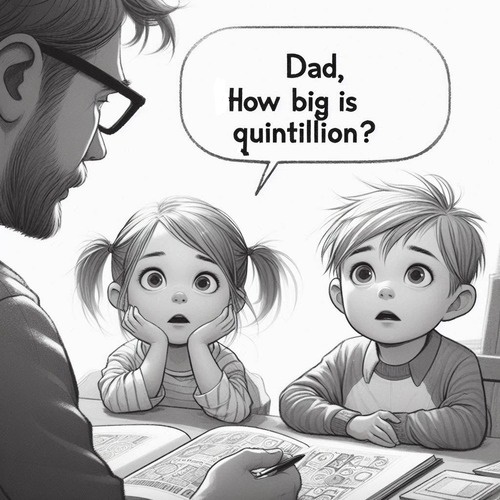Undesigned Coincidences: Subtle Details That Validate Bible Truth
CONNECTING THE DOTS WITH UNDESIGNED COINCIDENCES
When detectives solve cases, they often look for small details that corroborate each other across multiple witness testimonies. These subtle connections—details that no single witness would think to fabricate or coordinate—often provide the strongest evidence that helps determine what really happened.
Similarly, the Bible contains numerous “undesigned coincidences” that subtly validate its historical reliability. These literary fingerprints offer compelling evidence that the biblical accounts stem from truthful testimony rather than fabrication.
WHAT ARE UNDESIGNED COINCIDENCES?
An undesigned coincidence occurs when one biblical passage casually mentions a detail that unintentionally explains or completes information found in another passage. These connections aren’t obvious contradictions or harmonisations. Rather, they’re subtle interlocking pieces that become apparent only upon careful examination.
The concept was developed extensively by scholars such as JJ Blunt in the 19th century and more recently by philosopher Lydia McGrew. These coincidences matter because they’re precisely the type of pattern we’d expect from genuine, independent accounts of real events—not the product of careful literary construction or forgery.
OLD TESTAMENT EXAMPLES
1. Ahab’s Ivory House
In 1 Kings 22:39, we find a passing reference to the ivory house Ahab built during his reign as king of Israel. The casual mention of an “ivory house” may seem like an exaggeration or literary flourish. However, the prophet Amos, writing in a completely different context, mentions “houses adorned with ivory” (Amos 3:15) when pronouncing judgement on Israel’s elite. Archaeological excavations at Samaria have confirmed the historical accuracy of these references, uncovering hundreds of ivory fragments and panels that once adorned royal buildings. Neither biblical author was trying to validate the other, yet their casual references align perfectly with archaeological evidence.
2. Hezekiah’s Tunnel
In 2 Kings 20:20, we read a brief mention of a pool and a tunnel by which Hezekiah brought water into the city, though the passage focuses primarily on other aspects of his reign. 2 Chronicles 32:30, meanwhile, provides complementary information, noting that “It was Hezekiah who blocked the upper outlet of the Gihon spring and channelled the water down to the west side of the City of David.”
Neither account fully explains this engineering feat, but together—along with Isaiah 22:11 mentioning “a reservoir between the two walls for the water of the Old Pool”—they provide a complete picture confirmed by archaeology. The Siloam Inscription discovered in the tunnel itself corroborates these seemingly casual Bible references.
3. David’s Family in Moab
In 1 Samuel 22:3-4, we read David took his parents to the king of Moab for protection while he was fleeing from Saul. This request may seem strange until we recall the casual genealogical detail in Ruth 4:17-22 that David’s great-grandmother was Ruth, a Moabite woman. David had family connections to Moab that made this a logical safe haven—a connection neither passage explicitly draws attention to.
4. Solomon’s Egyptian Wife
In 1 Kings 3:1, we read “Solomon made an alliance with Pharaoh king of Egypt and married his daughter.” Later, in 1 Kings 9:16, an offhand comment mentions “Pharaoh king of Egypt had attacked and captured Gezer. He had set it on fire. He killed its Canaanite inhabitants and then gave it as a wedding gift to his daughter, Solomon’s wife.” These references in different chapters explain why Solomon controlled this strategic city and illuminate the political dimensions of his marriage—details no forger would think necessary to include or connect.
5. The Famine in Elijah’s Time
In 1 Kings 17:1, Elijah declares to Ahab “there will be neither dew nor rain in the next few years except at my word.” The narrative then follows Elijah’s experiences during the drought. Meanwhile, in 1 Kings 18:5-6, we find Ahab telling Obadiah, “Go through the land to all the springs and valleys. Maybe we can find some grass to keep the horses and mules alive so we will not have to kill any of our animals.” The text then mentions, “So they divided the land they were to cover.”
This reference to dividing the land explains the severity of the drought and why Obadiah was traveling and able to meet Elijah in the first place—a narrative connection neither passage explicitly draws.
6. The Death of Ahaziah
In 2 Kings 8:25-26, we’re told “Ahaziah son of Jehoram king of Judah began to reign… Ahaziah was 22 years old when he became king, and he reigned in Jerusalem one year. His mother’s name was Athaliah, a granddaughter of Omri king of Israel.” Later, in 2 Kings 9, when Jehu executes judgement on the house of Ahab, he encounters “the brothers of Ahaziah king of Judah” (9:27) and has them killed too, though no explanation is given.
The casual mention of Athaliah being related to Omri (and thus to Ahab) in the earlier passage explains why Ahaziah’s brothers were also targeted—they were related to the northern kingdom’s royal family through Athaliah. This connection isn’t explicitly drawn in either passage but emerges naturally from the factual reporting.
7. Daniel’s Promotion
In Daniel 5:29, after Daniel interprets the writing on the wall for Belshazzar, we read “Belshazzar gave orders, and they clothed Daniel in purple, placed a gold chain around his neck, and proclaimed him the third ruler in the kingdom.” The specific detail seems odd—why not second-in-command? This detail makes perfect sense when we consider the casual mention in verse 10 that the “queen” (likely the queen mother) reminds Belshazzar of Daniel’s abilities. Historical records show Belshazzar was himself only the second ruler, as his father Nabonidus was still officially king though absent. Daniel could only be offered the third position—a detail no fabricator would likely include.
NEW TESTAMENT EXAMPLES
1. The Feeding of the 5,000
This miracle appears in all four Gospels, with each account providing unique details that unintentionally complement each other:
John 6:4 explains why crowds were gathering: “The Jewish Passover Festival was near.” This detail is missing from the other accounts. Mark 6:39 mentions people sat on “green grass”—consistent with springtime during Passover in an otherwise arid region. Matthew 14:21 specifically notes “the number of those who ate was about 5000 men, besides women and children”—explaining potential differences in crowd estimates. Luke 9:10 specifies they were near Bethsaida, providing geographical context absent in other accounts. None of these authors appears to be intentionally harmonising. Yet their accounts interlock perfectly.
2. Peter’s Denial
The accounts of Peter’s denial contain several undesigned coincidences: John 18:15-16 uniquely explains how Peter gained access to the high priest’s courtyard: “another disciple who was known to the high priest” accompanied him. Luke 22:61 alone mentions “The Lord turned and looked straight at Peter”—explaining the emotional impact that triggered Peter’s immediate remembrance of Jesus’ prediction. Mark 14:30 specifically records Jesus saying the rooster would crow twice—a detail Mark alone includes but which explains the timing mentioned in other gospels. John 18:10 uniquely identifies the servant whose ear Peter had cut off as Malchus, explaining the heightened danger Peter faced in the courtyard and his motivation to deny Jesus.
3. The Death of John the Baptist
In Matthew 14:1-2, we read Herod believed Jesus was John the Baptist risen from the dead. The text then explains John’s execution. Luke 9:7-9 adds the detail that Herod “tried to see him [Jesus]”—which makes perfect sense if Herod believed Jesus was John resurrected. Mark 6:14-29 provides the fullest account but includes the casual detail that many believed Jesus was “John the Baptist… raised from the dead” which is why “miraculous powers are at work in him.” This offhand explanation clarifies why Herod, who’d executed John, would be particularly disturbed by reports of Jesus’ miracles.
4. Paul’s Collection for Jerusalem
Across several epistles, Paul makes passing references to a collection for believers in Jerusalem: Romans 15:25-26; 1 Corinthians 16:1-3; 2 Corinthians 8-9. In Acts 24:17, Paul casually mentions, “After an absence of several years, I came to Jerusalem to bring my people gifts for the poor and to present offerings.” These scattered references across epistles to different audiences create a coherent narrative about a specific collection that Paul organised—details no forger would have thought necessary to fabricate consistently across multiple documents.
5. The Crucifixion Darkness
Luke 23:44-45 records “darkness came over the whole land… for the sun stopped shining” during Jesus’ crucifixion. Mark 15:33 specifies the timing: “from noon until three in the afternoon”—the brightest part of the day when a darkness would be most noticeable. Matthew 27:45 confirms the same timing but adds that “darkness came over all the land.” None of the accounts explicitly states this wasn’t a normal eclipse, but John’s Gospel places the crucifixion during Passover—which always occurs during a full moon—making a solar eclipse astronomically impossible. This undesigned chronological detail across Gospels supports the supernatural nature of the darkness without any author explicitly making that argument.
6. The Empty Tomb
In John 20:1-8, we read about Peter and “the other disciple” running to the tomb. Verse 4 casually mentions “the other disciple outran Peter and reached the tomb first.” This seemingly unnecessary athletic detail makes sense when we consider John’s Gospel never directly identifies “the beloved disciple” as John himself—a humble self-reference. The specific detail about outrunning Peter reflects the kind of personal memory an eyewitness would include, not something a later fabricator would invent. Luke 24:12 mentions only Peter running to the tomb, but doesn’t contradict John’s more detailed account—it simply omits mentioning the second disciple, focusing on Peter’s reaction.
7. Pilate’s Surprise at Jesus’ Death
Mark 15:44 uniquely records “Pilate was surprised to hear that he was already dead. Summoning the centurion, he asked him if Jesus had already died.” This detail makes perfect sense when considered alongside the historical fact (mentioned in John 19:31) that the Jewish leaders wanted the bodies taken down before the Sabbath, which is why the soldiers were sent to break the legs of the crucified men to hasten death.
Mark doesn’t explain why Pilate was surprised, but John’s account of the Jewish request and the typical duration of crucifixion unintentionally provides the context for Pilate’s reaction that Mark records.
CONCLUSION: THE CUMULATIVE CASE
What makes these undesigned coincidences so compelling is their cumulative effect. A single example may be dismissed as chance, but dozens of these intricate connections across books written by different authors in varied contexts create a powerful case for the historical reliability of Scripture.
These literary “fingerprints” exhibit exactly the pattern we would expect from truthful, eyewitness testimony or accounts based on reliable sources. They’re casual, seemingly peripheral details that aren’t highlighted as important but which unintentionally corroborate each other. If these accounts were fabricated, the forgers would need to have been impossibly clever—planting these subtle connections across texts while simultaneously making them appear unintentional. The far simpler explanation is that these texts accurately record real events, with each author naturally including details they considered significant from their perspective.
UNDESIGNED-COINCIDENCES: OUR RELATED POSTS
- Mountains or Molehills? How Hyperbole Reveals Bible Truth
- The Study of Names: Surprising Support for Bible Reliability
Editor's Pick

The Throne-Room Vision: Who Did Isaiah See?
The scene is unforgettable: Isaiah stands in the temple, and suddenly the veil between heaven and earth tears open. He [...]

The Angel of the Lord: Can We Be Certain It Was Christ All Along?
Throughout the Old Testament, a mysterious figure appears: the Angel of the LORD. He speaks as God, bears God’s name, [...]

The Doctrine of Providence: Does God Really Govern All Things?
You’re sitting in the doctor’s office when the diagnosis lands like a thunderclap. Your mind races: Why this? Why now? [...]
SUPPORT US:
Feel the Holy Spirit's gentle nudge to partner with us?
Donate Online:
Account Name: TRUTHS TO DIE FOR FOUNDATION
Account Number: 10243565459
Bank IFSC: IDFB0043391
Bank Name: IDFC FIRST BANK






